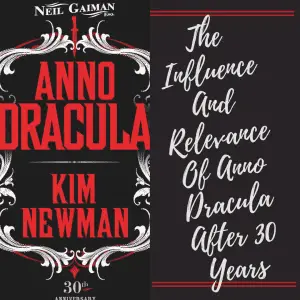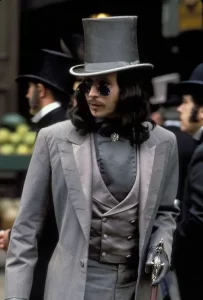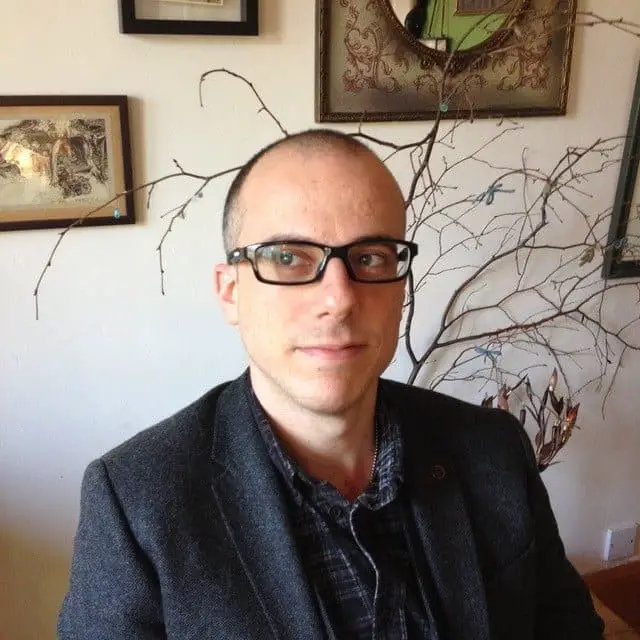The Influence And Relevance Of Anno Dracula After 30 Years
 The sympathetic portrayal of Dracula as pining for a lost love, and finding her in the reincarnated form of Mina Murray, is so embedded in our culture that it may come as a surprise that this is an invention of screenwriters and not Bram Stoker.
The sympathetic portrayal of Dracula as pining for a lost love, and finding her in the reincarnated form of Mina Murray, is so embedded in our culture that it may come as a surprise that this is an invention of screenwriters and not Bram Stoker.
The culmination of this theme is in Francis Ford Coppola’s remarkably unscary Bram Stoker’s Dracula (1992). Despite Dracula (Gary Oldman, who does what he can with the script) appearing in numerous terrifying forms—a werewolf, a wingless bat creature—the horror is undercut by the Count’s Victorian gentlemen persona who chastely courts Winona Ryder’s character, Mina Harker.
 In the novel, Dracula is a much nastier piece of work. He is indiscriminate as to the gender he feasts on, but he knows the biggest threat he can pose to the uber-Victorian team that hunts him is to turn their chaste women into rutting, slurping, loose women. And his reason for going to England isn’t to woo Murray, but to take it over.
In the novel, Dracula is a much nastier piece of work. He is indiscriminate as to the gender he feasts on, but he knows the biggest threat he can pose to the uber-Victorian team that hunts him is to turn their chaste women into rutting, slurping, loose women. And his reason for going to England isn’t to woo Murray, but to take it over.
Published 30 years ago, Anno Dracula by Kim Newman restores Dracula (who appears off-stage until the finale) to a hateful, red-eyed demon who views women as meat. Newman’s conceit is that Dracula succeeds in conquering England and rules alongside a “turned” Queen Victoria in a throne room that is little more than a slurping orgy.
From this starting point, Newman creates a world half vampire, half human (or, as chilling classified, “warm”). He cleverly applies this to historical characters. Oscar Wilde is still witty and quotable and remains homosexual in that he only drains men.
Jack the Ripper still prowls Whitechapel, and has surgical skills. But he is now Dr. John Seward, the survivor of Stoker’s vampire-hunting team. Newman cleverly extrapolates from the novel. Seward is a human avenging his lost love, Lucy Westerna, who in the novel was “turned” by Dracula and then mercifully destroyed by the vampire hunters. Thus, he channels his anger into slicing up vampire prostitutes with a sliver scalpel.
In a nod to George Orwell, Newman has Dracula turn England into a police state complete with concentration camps (one of which houses Sherlock Holmes) and a vampires-only enforcement branch. Discrimination against the “warm” reigns in the government, and only those willing to “turn” are given a seat at the table.
Part of the fun in Anno Dracula lies in spotting who Newman is referencing. Even “turned,” Newman doesn’t violate the characters established by their creators. H.G. Welles’ Doctor Moreau is still playing “God,” but this time around, he is not trying to turn animals into humans. He is now attempting to turn the more demonic-looking vampires—in the form of the bat-eared, rodent-fanged monstrosity from the film Nosferatu—into something more attractive.
An achievement of Anno Dracula is not just how seamlessly Newman inserts literary and historical figures into this alternate history, but in how he outdoes Stoker in making Dracula even more terrifying.. This is done by keeping the Count offstage and showing how evil he is by having even the “turned” speak about him in whispers.
Thankfully, Newman doesn’t go the cliched route about the “eroticism” of vampires.
None of the vampires in the novel have any sex appeal, and the female character “turned” doesn’t treat it as orgasmic, but as something “too much fuss has been made of.”
Newman acknowledges that he has taken much from sci-fi author Philip Jose Farmer’s Wold Newton universe. In it, Farmer posits that not only the great pulp heroes are real, but come from the same family. Without necessarily outdoing Farmer’s cleverly-constructed family tree, masquerading as a scholarly “thesis,” Newman gives alternate history a new dimension by putting vampires into the mix.
Today, in our League of Extraordinary Gentlemen era, and the family squabbles between werewolves and vampires in the Underworld Film Series, alternate histories featuring literary characters are commonplace. But thirty years ago, Newman provided the sourcebook while portraying a world that is fresh to this day.
- About the Author
- Latest Posts












